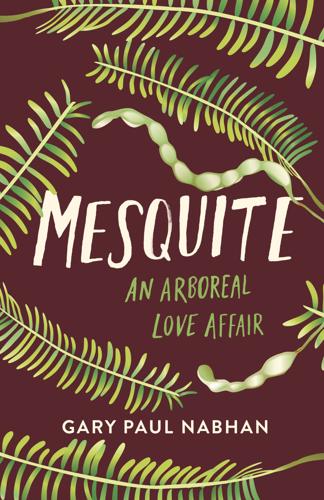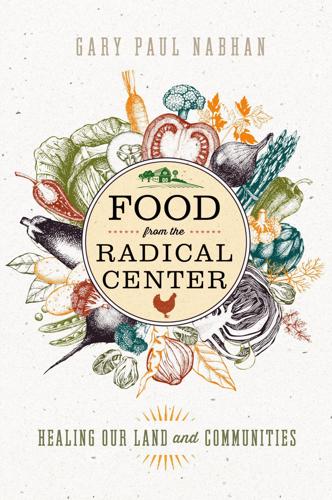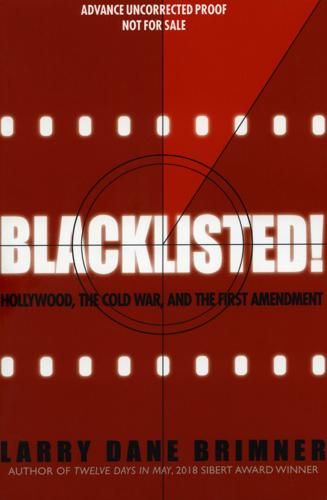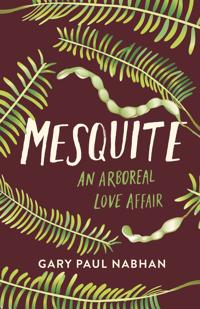Agricultural ecologist and ethnobotanist Gary Paul Nabhan, considered the father of the local food movement and a pioneer of the heirloom seed-saving movement, has authored more than 30 books. His two most recent books, reviewed here, were published in September. Nabhan, the Kellogg Endowed Chair at the University of Arizona’s Southwest Center, lives in Patagonia.
Food from the Radical Center: Healing our Land and Communities, Gary Paul Nabhan. Island Press. $28
Feed thy neighbor. Although ours is an increasingly fractious society, improving the lives of others is a concept everyone can get behind regardless of politics, faith, or viewpoint. Gary Nabhan identifies the place where consensus exists as the Radical Center, the fertile ground where community members put aside their differences to share the work of restoring the biocultural landscape and the nation’s ability to produce nourishing food. This is an insightful narrative by a life-long conservationist who understands that conservation works best from the ground up; when communities make decisions that support — rather than hamstring — local stakeholders and share the work to heal the land, everyone thrives. Each chapter begins with a question that invites the visualization of an ideal scenario — the flutter of hummingbirds at nectar-rich plants, the ambrosial flavor of an heirloom date, fish leaping in a restored water hole — and goes on to explain how these ideals were achieved by restoring the soil, replenishing water, creating environments that reinvigorate near-extinct species like bison and sturgeon, and bringing back heritage plants and grains. Local readers will especially enjoy Nabhan’s shout-out to Tucson, detailing how grassroots efforts of Tucsonans, from seed libraries to rainwater harvesting and beyond, led to the Old Pueblo’s designation as a UNESCO World City of Gastronomy. — Helene Woodhams
Mesquite: An Arboreal Love Affair, Gary Paul Nabhan. Chelsea Green Publishing. $22.50 hardcover, $15.03 Kindle
Consider the lowly mesquite tree. Not mighty like the oak nor majestic like the redwood, the spindly mesquite was long considered good for nothing — not for food, not for shade, just a ‘devil with roots … scabbing cows and spooking horses.’ They were chopped down, bulldozed, and got no respect. But that was then — these days awareness is growing of the importance of prosopis velutina to arid landscapes and desert people, and with this enlightening and highly readable book, Gary Nabhan is leading the charge. Culturally and ecologically, the mesquite is a keystone species, unmatched in its ability to provide nourishment, nitrogen, and habitat, and Nabhan explains the science behind this botanical wonder with the enthusiasm of a true believer. Really, he’s such a fan of the mesquite that he’d like nothing better than to metamorphize into one, and his gradual transformation— complete with roots and bark — is a theme he periodically revisits throughout the lively narrative. The result is a blend of scholarship, ethnobotany and rollicking humor, rounded out with some mesquite recipes you won’t want to miss. After all, if you’re coming home to eat in the desert, mesquite is definitely on the menu. — Helene Woodhams
Blacklisted!: Hollywood, the Cold War, and the First Amendment, Larry Dane Brimner. Calkins Creek, an Imprint of Highlights. $17.95, $9.99 Kindle
With Blacklisted!, Larry Dane Brimner vividly describes for young readers one of American democracy’s darkest periods, when public hysteria about the Communist menace derailed the First Amendment rights of 19 men from the film industry. Beginning with the historic roots of anti-Communism in America and working systematically through the events leading up to the hearings by the U.S. House of Representatives’ Committee on Un-American Activities, Brimner offers a clear-sighted and well-documented account of the story as it unfolded, as compelling as it is highly-readable. The dramatic design of the book effectively echoes the “black and white” media of the mid-20th century and is a brilliant complement to the narrative, which is lavishly illustrated with news photos and original documents. Of special interest is the section dealing with the verdict and its profound, lifetime impact on 10 of the witnesses who erroneously believed they would be protected by the Constitution. Brimner concludes with an observation on the dangers inherent in history’s disturbing propensity for repeating itself, viewed through the lens of current events. This excellent book is recommended for readers in grades seven and up, but it’s hard to imagine that anyone wouldn’t enjoy and benefit from it. Brimner, who has won multiple awards for nonfiction for young readers, divides his time between Tucson and San Diego. — Helene Woodhams
“Field of Bones,” J.A. Jance. William Morrow. $27.95.
J.A. Jance has just popped out her 22nd Joanna Brady mystery. The prolific Seattle- and Tucson-based author has racked up two pages of mystery titles, and — judging from her Amazon reviews and Tucson Festival of Books reception — she has the fan base to support them. They won’t be disappointed in “Field of Bones.” In “Field of Bones,” nothing — not even a weeks-old baby — can keep Cochise County Sheriff Joanna Brady away from the action. She’s officially on maternity leave, with her husband out on a book tour, but when the acting sheriff gets overwhelmed by the discovery of a dumping ground of bodies and the threat of a serial killer on the loose, she steps up, breast pump and all. Jance has created effective suspense and a decidedly creepy perpetrator in this novel. Plus, a killer meatloaf recipe. — Christine Wald-Hopkins
”In The Clear Light of Day: A Spiritual Memoir,” Jon P. Dorschner. Jon Dorschner. $75.
Jon P. Dorschner, PhD., of the University of Arizona School of Government and Public Policy, chronicles his life and academic and spiritual journeys in this revised volume of his first “Clear Light…” memoir. From Army kid in Albuquerque through hippie student in Europe to exotica seeker in India — where he finds his professional and spiritual calling — his is an American life that reflects the cultural upheavals of the ’60s and ’70s. He suggests that his life journey has been informed by prajna, “the inner voice guiding the individual,” and there’s apparently more to come in Volume II. — Christine Wald-Hopkins
“Trouble Talking: The Realities of Communication, Language, and Speech Disorders,” Daniel R. Boone. Roman & Littlefield. $34.
It has been said that one of the few professional perks of public school teaching is that you always have stories to tell. Apparently that’s also true of speech-language pathology. In “Trouble Talking,” UA Department of Speech, Language, and Hearing Sciences Professor Emeritus Daniel R. Boone (yes, he does include a “the other Daniel Boone” anecdote in the book) presents case histories to illustrate various speech disorders. In chapters on aphasia, dementia, neurogenic and voice disorders, and speech pathologies, Boone explains the conditions and causes of each, relates case stories, answers common questions, and describes clinical treatments. Respectful and sympathetic, targeted to a lay audience, the book also recommends resources. Turns out, the brain and how it functions in real-life communication can provide pretty engaging tale-telling. — Christine Wald-Hopkins









